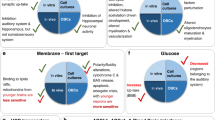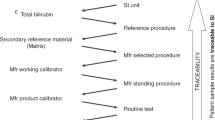Abstract
ABSTRACT: Despite intensive investigation it remains uncertain how bilirubin enters the brain and how it exerts a toxic effect on neurones. Studies of induced hyperbilirubinemia in animal models in vivo have failed to reproduce bilirubin encephalopathy without additional factors such as hypoxia, asphyxia, hypercapnia, and disruption of the blood-brain barrier. The aim of this study was to investigate, using 31P NMRS, whether hyperbilirubinemia alone or in association with hyperosmolar opening of the bloodbrain barrier caused any disturbance of cerebral energy metabolism in vivo. Spectra were acquired using a surface coil positioned over the right cerebral hemisphere of anaesthetized adult rats placed in the bore of a 1.9 Tesla magnet. Hyperbilirubinemia alone at a maximum mean serum concentration of 1063 ± 175 /umol/L (mean ± SD, n=7) caused no apparent disruption in brain energy metabolism. However, in combination with hyperosmolar blood-brain barrier opening a serum bilirubin concentration of 483 ± 52 µmol/L (mean ± SD, n - 9) was associated with a reduction in PCr/(PCr + Pi) ratio from 0.68 ± 0.06 to 0.44 ± 0.14 (mean ± SD, p < 0.001). A significant correlation was demonstrated between cerebral hemisphere bilirubin content and the reduction in PCr/(PCr + Pi) (r=0.84, n=9, p < 0.01). These results demonstrate in vivo a disruptive effect of bilirubin on cerebral energy metabolism in the presence of an open BBB. This mode of entry and mechanism of toxicity may be factors in the pathophysiology of bilirubin encephalopathy in the newborn infant.
Similar content being viewed by others
Log in or create a free account to read this content
Gain free access to this article, as well as selected content from this journal and more on nature.com
or
Author information
Authors and Affiliations
Rights and permissions
About this article
Cite this article
Ives, N., Bolas, N. & Gardiner, R. The Effects of Bilirubin on Brain Energy Metabolism during Hyperosmolar Opening of the Blood-Brain Barrier: An In Vivo Study Using 31P Nuclear Magnetic Resonance Spectroscopy. Pediatr Res 26, 356–361 (1989). https://doi.org/10.1203/00006450-198910000-00014
Received:
Accepted:
Issue date:
DOI: https://doi.org/10.1203/00006450-198910000-00014
This article is cited by
-
What constitutes a “Safe” level of bilirubin concentration in preterm and full term infants?
The Indian Journal of Pediatrics (1993)



